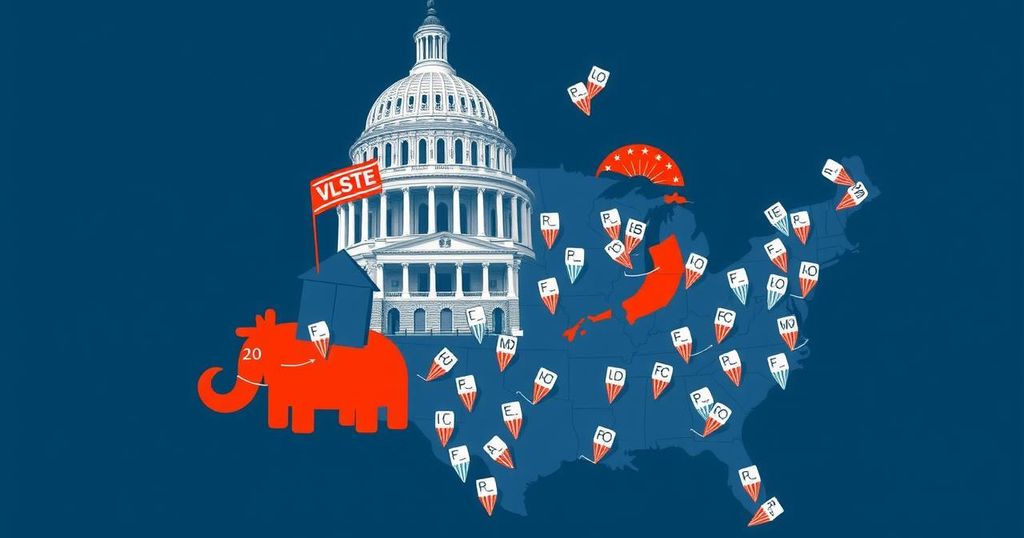Republicans are nearing a majority in the House of Representatives with a recent victory by Congressman Eli Crane, bringing their total to 213 seats. There are 20 undecided races remaining, and a majority would allow the party to advance its legislative objectives. Concurrently, Donald Trump’s administration signals potential shifts in traditional foreign policy approaches, underscoring the impact of these elections on U.S. governance.
As the Republican Party approaches a majority in the House of Representatives, recent victories, including re-election of Congressman Eli Crane from Arizona, have placed them at 213 seats of the required 218. With 20 races still undecided, Republicans are optimistic about their prospects for comprehensive legislative control, particularly after Donald Trump’s recent presidential victory. The results permit Republicans to pursue an ambitious agenda centered on fiscal reforms, energy deregulation, and stricter immigration policies, enhancing their potential influence over the legislative process. Meanwhile, Democrats have secured 202 seats, with their ability to counter Republican advances hinging on winning the remaining competitive races, primarily located in western states. Democrats lead contests in several districts, yet many Republicans are showing favorable margins in crucial states like Arizona, Colorado, and Iowa.
The U.S. House of Representatives plays a critical role in shaping federal legislation, and recent elections have significantly altered the balance of power. Republicans’ proximity to regaining full control is underscored by their recent electoral successes and Donald Trump’s regained presidency. This has implications for the legislative agenda, particularly concerning fiscal policy and national security, while Democrats must leverage any potential victories in ongoing elections to prevent Republican dominance further. Races in traditionally competitive states are pivotal for both parties as they seek to position themselves for success in the next congressional session. The current political landscape is indicative of broader trends within the American electorate.
In summary, Republicans are on the verge of reclaiming a majority in the House of Representatives, bolstered by key election victories and Donald Trump’s recent presidential win. With legislative priorities focused on economic reform and national security, the Republican Party seeks to solidify its power while Democrats aim to mitigate losses in competitive districts. The outcome of the remaining races will be crucial in determining the extent to which Republicans can enact their agenda in the upcoming congressional term.
Original Source: www.aljazeera.com






